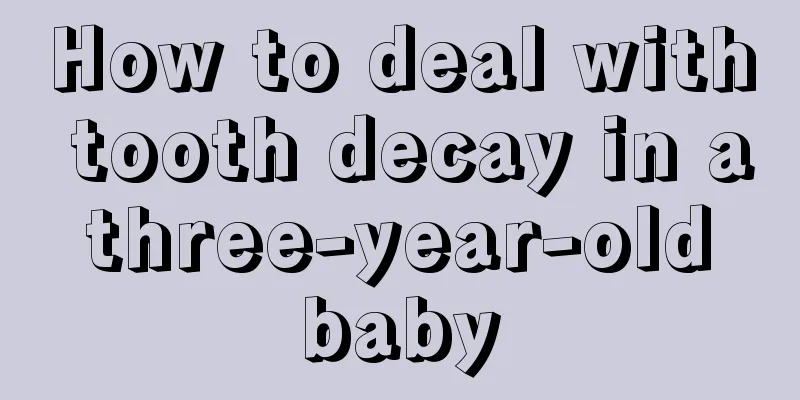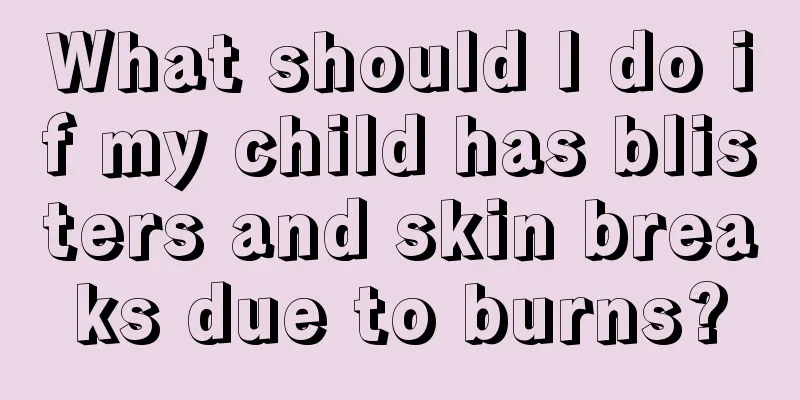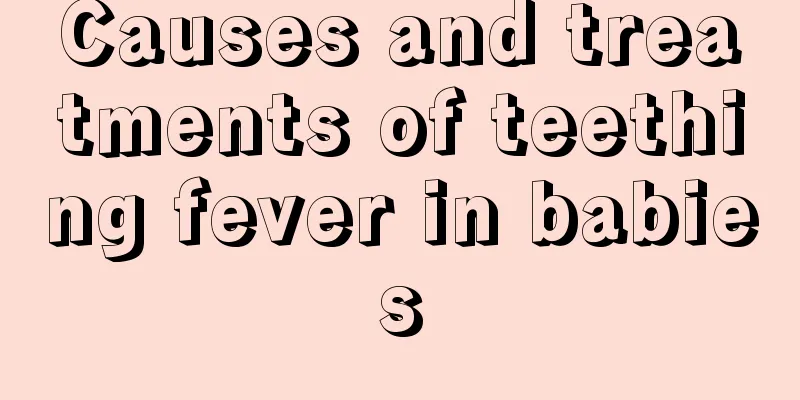How to deal with tooth decay in a three-year-old baby

|
What causes tooth decay in children? If a three-year-old baby has tooth decay, it is mostly because of poor prevention in daily life. Parents have certain responsibilities, such as eating too much sweets and not paying attention to the development of oral hygiene habits. Some parents think that their children are still young and do not need to brush their teeth. This is a wrong view. In fact, children of a certain age should learn how to brush their teeth and apply dental health knowledge. Parents should educate them in this regard. Having healthy deciduous teeth can ensure that the teeth have good chewing function, help the baby absorb nutrients in a balanced way, and promote the overall development of the body. Dental plaque is the culprit for problems such as tooth decay and toothache, and will directly affect the baby's physical and mental health. Dental plaque is a group of microorganisms that adhere to the surface of teeth and other soft tissues in the mouth. The main components of dental plaque are bacteria, intercellular substances, a small amount of white blood cells, desquamated epithelial cells and food debris. The bacteria in dental plaque will react with food remaining in the mouth to produce acid, which damages the tooth enamel and causes tooth decay and gingivitis. Over time, the structure of the tooth surface will be destroyed, forming tooth decay and causing toothache. This can eventually lead to loose teeth or even tooth loss. The formation process of dental plaque is relatively complicated. It is generally believed that the formation process is as follows: first, a glycoprotein in the saliva attaches to the surface of the tooth enamel when it comes into contact with the teeth to form an acquired film. Then, various bacteria in the mouth will be adsorbed and arranged in an orderly manner on this thin film. The bacteria gradually grow and multiply here. As the types and numbers of bacteria gradually increase, it becomes mature dental plaque. If dental plaque has already formed, it is difficult to remove by simply rinsing your mouth or washing it with water. The most effective basic removal method is brushing your teeth. The correct brushing method can remove most of the plaque on the tooth surface through mechanical friction. If the baby cannot brush his teeth by himself, family members can use a finger brush to help the baby clean his teeth. When the baby grows up and can do it independently, you should choose a children's toothbrush with a small brush head and fine and soft bristles. Above we have learned what to do if a three-year-old baby suffers from tooth decay. Through the above explanation, we hope that it will be helpful to parents with babies at home. Children should be educated on how to develop oral hygiene habits and learn about how to brush their teeth correctly, which will be very helpful for their future growth. |
<<: What to do if a 2-year-old child has a fever at night
>>: What to do if a baby has diarrhea in March
Recommend
What should I do if my child coughs in the morning and evening?
There are many reasons for children's cough. ...
Early symptoms of nephritis in children, mothers must read
If parents want to know whether their children ar...
The child has a fever and is shivering
When children have a fever, they will feel that t...
Children's princess hair
Every girl has a princess dream, especially when ...
One and a half year old baby sleep time
Everyone knows that when babies are young, this i...
What is the cause of the sudden decline in children's vision?
Our eyes play a huge role in our daily lives. Onc...
How to care for rough skin on baby's face
In life, you will find that some children's s...
What is the rehabilitation method for baby's clubfoot?
Baby's foot valgus refers to the baby's h...
What tests should be done to determine the fetal position?
Although doctors can determine the baby's spe...
Care for neonatal omphalitis: these six points should be kept in mind
Newborns are more likely to suffer from omphaliti...
Why do children have zinc deficiency?
Recently, many people have asked why children are...
What should I do if my baby has a bad stomach?
Babies have poor gastrointestinal function and of...
Why does my child’s throat always have a hoarse sound?
Some mothers may find that their children have so...
Treatment for bruises on baby's body
I don’t know if you have ever encountered bruises...
Why do children grow slowly?
Children's physical health and growth and dev...









